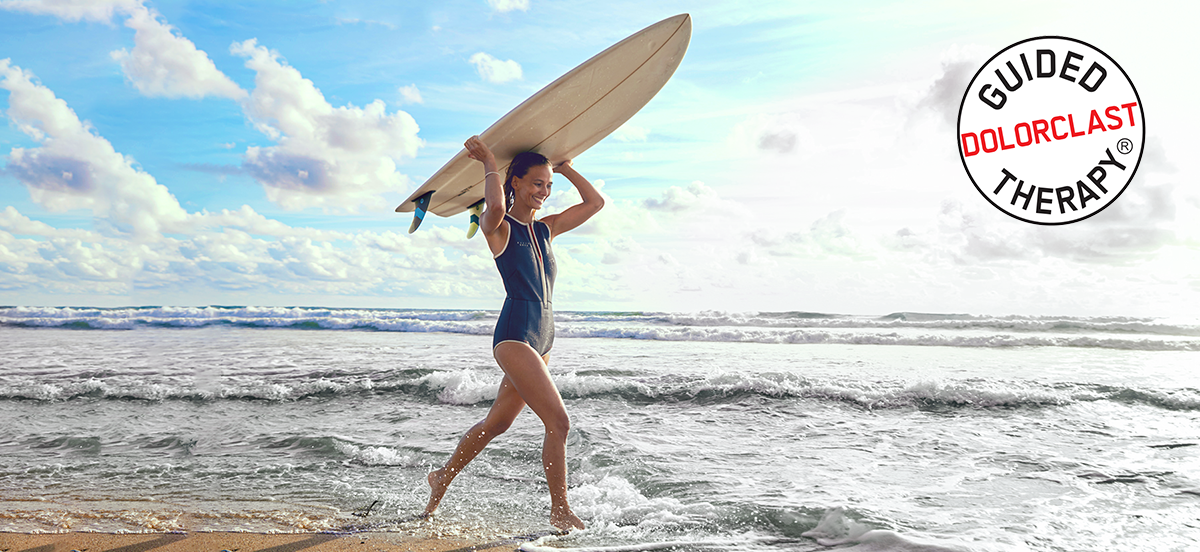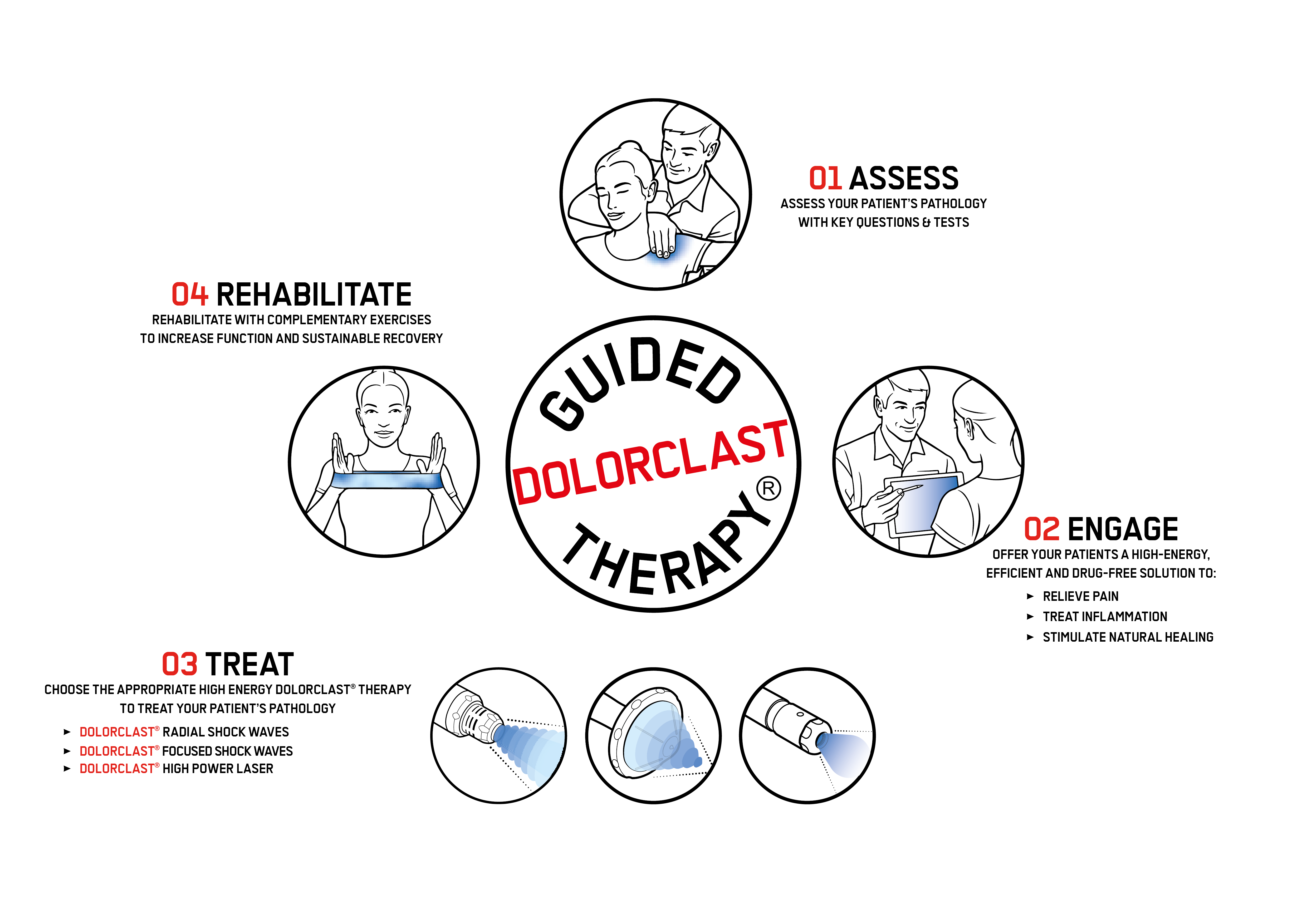
Guided DolorClast® Therapy
Unlock your healing potential
Natural healing is blocked by biological interactions between pain and inflammation mechanisms. Guided DolorClast® Therapy quickly and efficiently treats pain and inflammation, whether acute or chronic. It unlocks the body’s ability to repair itself while activating specific healing mechanisms. Guided DolorClast® Therapy gets patients moving and successfully leads them to recovery within a few weeks.

What is Guided DolorClast® Therapy?
Discover Guided DolorClast® Therapy: an evidence-based clinical application of high-energy therapies targeting the root cause of pain and inflammation to promote self-healing.
Guided DolorClast® Therapy offers non-invasive, fast and effective solutions for the treatment of acute and chronic musculoskeletal disorders.

RELIEVE PAIN
- Overwhelms C nerve fibers to inhibit the release of Substance P, which is responsible for increasing pain signals.
- Inhibits sensory neurons located at nerve endings to suppress pain signals to the central nervous system.
- Strong analgesic effect kicks in after just 5 min of treatment.
TREAT INFLAMMATION
- Reduces the release of Substance P, thus inhibiting neurogenic inflammation and allowing scleraxis expression.
- Decreases the amount of Prostaglandin E2 (PGE2) responsible for mediating acute inflammation, mimicking the effects of non-steroidal anti-inflammatory drugs (NSAIDs) without side effects.
- Fast anti-inflammatory action, paving the way to healing.
STIMULATE NATURAL HEALING
- Improves angiogenesis, blood circulation, and pressure.
- Activates the repair of damaged muscle fibers.
- Stimulates tendon remodeling and helps decrease erosive wear.
- Decreases cartilage degradation and stimulates repair.
- Stimulates bone healing.
- Fosters regeneration of muscles, tendons, cartilage and bone.
Applications
Guided DolorClast® Therapy addresses multiple musculoskeletal, neurological and vascular applications.
Is your patient suffering from one of these conditions?
- Back pain
- Tendinopathy
- Osteoarthritis
- Enthesopathy
- Fasciopathy
- Myofascial pain syndrome
- Calcification
- Delayed union and non-union fracture
- Spasticity
- Erectile dysfunction
